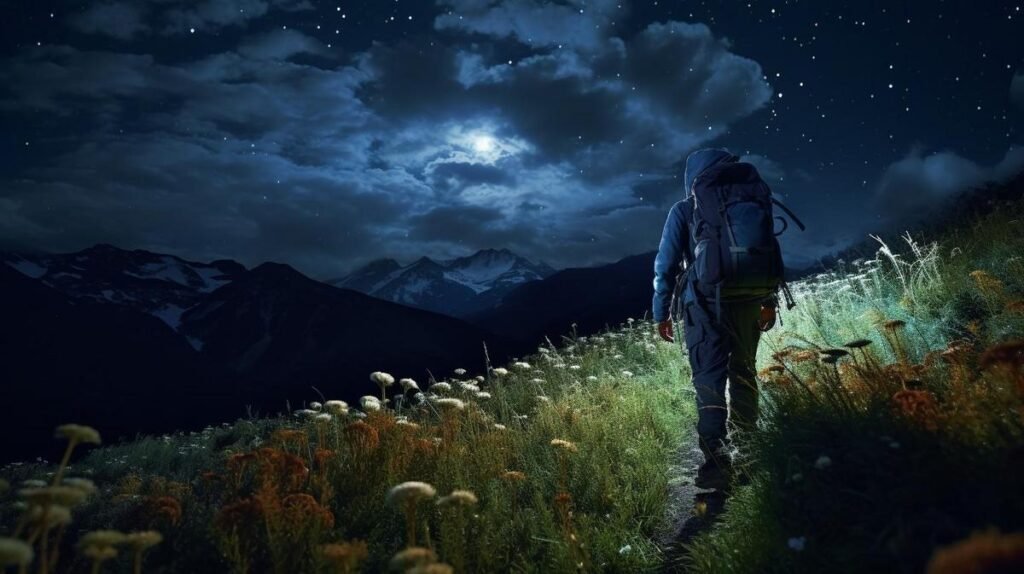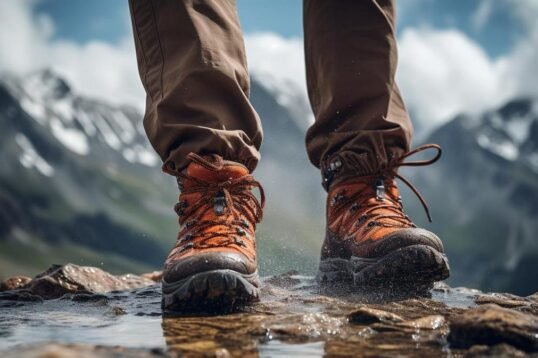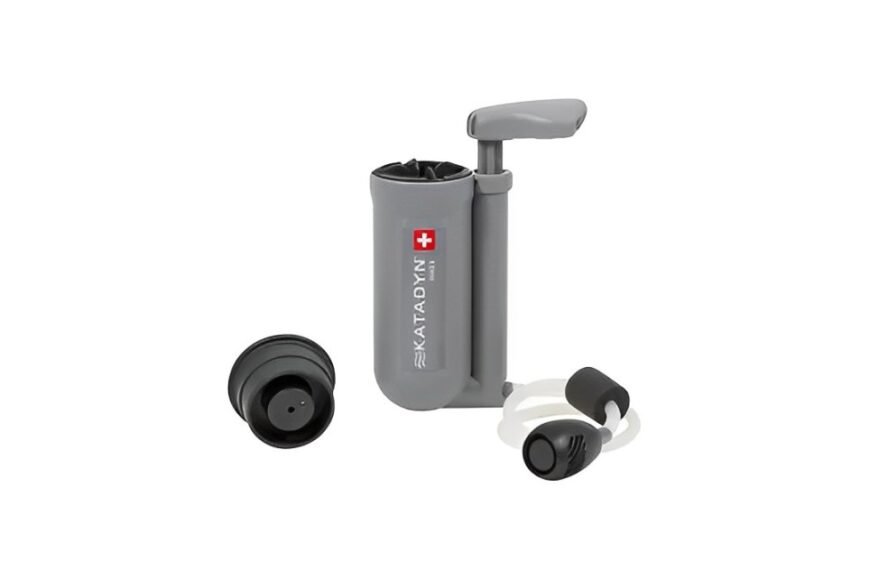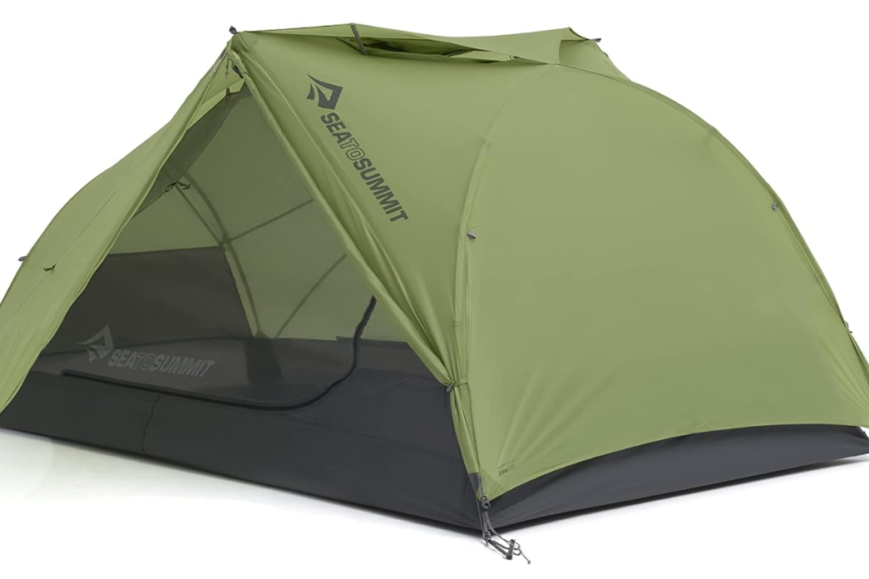- Night hiking’s popularity is driven by the unique and serene experience under the night sky, with cooler temperatures and fewer crowds.
- Essential equipment includes a headlamp, reflective gear, proper lighting, a whistle, a map, and extra batteries for safety.
- Preparing for a night hike involves checking gear, telling someone your route, checking the weather, starting with shorter treks, and packing essentials.
- Best trails for night hiking can be found through local park websites, and platforms like AllTrails, with mountain tops and wildlife parks being popular.
- Activities like stargazing, wildlife spotting, themed treks, and nocturnal nature walks enhance the night hiking experience.
- Safe night navigation requires a clear map, skills to use it, a good headlamp, and awareness of weather and celestial events.
- Best practices for solo and group night hikes include communicating plans, staying aware, forming groups with similar interests, and choosing based on personal preference.
- Minimizing environmental impact involves adhering to no-trace principles, maintaining quiet, and conserving trails for sustainable night hiking experiences.
Gone are the days when hiking was just a daylight pursuit. Night hiking is on the rise. Why? The thrill of moonlit trails and fresh night air pulls adventurers outdoors after dark. It’s a new way to experience the wild, under the stars. Join me as we delve into why more hikers are switching off their day plans and tuning into the nocturnal call of the wild!
Why Is Night Hiking Becoming Increasingly Popular?
What is the meaning of night hiking? Night hiking is walking on trails after the sun goes down. Why do people choose nocturnal hikes over daytime ones? People seek the thrill and calm of the dark.
Let’s dive in: imagine moving through the woods under a starry sky. You hear the soft hoot of an owl, and the cool air holds the scent of pine. This is what draws folks to night walking adventures. It’s not just a hike; it’s a moonlit hiking experience. You feel close to nature in a new, mysterious way.
Stars and nocturnal creatures are part of the charm. Darkness makes ordinary trails new and exciting. Hikers use the lunar glow to guide their steps. This is why after-dark trails have a magic all their own. More hikers are trading sun hats for headlamps now.
Night hikes also offer cooler temps and fewer crowds. In warmer months, the night brings relief from heat. You might find you have the path all to yourself.
Some communities now host night events on trails. These gatherings kick off an interest in trying hikes in the dark. Once you start, it’s easy to get hooked on the peaceful vibe of nocturnal hikes.
To sum it up, night hiking shines as a fresh and thrilling outdoor activity. It’s something special to hike by the light of the moon. The more hikers learn about it, the more they want to try it. This is why night hikes are the new go-to for many. So grab your flashlight and join the adventure.

What Equipment Is Essential for Safe Night Hiking?
To ensure safety at night, you need a good headlamp, reflective gear, and proper lighting. A strong headlamp shines light where you look and keeps your hands free. This is the most important thing to have. Pick a bright one, that has a long battery life, and feels good on your head. Reflective gear helps others see you. It works by bouncing back light that hits it, like car lights.
Think of a headlamp as eyes for the dark and reflective gear as a way to wave “here I am!” at others. Together, they are like a safety net in the night. Lighting guides you and warns everyone you are there. Without it, you’re like a small fish in a big pond at night.
Don’t forget about other must-haves like a whistle, a map, and extra batteries. The whistle can call for help when your voice might fail. A map guides you when trails look all the same. Extra batteries mean light doesn’t run out.
Night trekkers have to plan, much like going on a space mission. Yet your walk is not in space, it’s in the quiet, cool night. It feels like a new world, and you want to be ready to enjoy it safely. Remember, a safe night trek starts with gear that sees and speaks for you when the sun says goodnight.
How Do You Prepare for Night Hiking?
What are the precautions for night hiking? You must plan, pack essentials, and stay safe. First, check your gear. Make sure you have a light, like a headlamp, and extra batteries. Wear bright clothes or reflective gear. Tell a friend where you will go and when you plan to come back. Check the weather. It can change fast at night. Look at the trail map, so you know where you are going.
Is it a good idea to hike at night? Yes, but you need to be ready for it. You must train your mind and body. Start with shorter night walks and build up to longer hikes. Practice using your gear in the dark at home. Learn how to spot and hear wildlife. This is part of the fun!
Now let’s talk about what to do before you hit the trails. Eat a good meal. You need energy for your hike. Pack snacks and water too. Stretch your legs and body. This keeps you from getting hurt. Make sure your phone is fully charged. If you get lost or hurt, you can call for help. And always check the time. You don’t want to be out too late.
Remember these tips before you go. They will help you have a great time and keep you safe. Night hikes can be fun and thrilling. With the right prep, you’ll create awesome memories under the stars.
Where Can You Find the Best Trails for Night Hiking?
Can you hike at night in Phoenix? Yes, you can! In Phoenix, like many places, there are trails open after dark. To find evening trails, check local parks and nature area websites. They often list if night hiking is allowed. When you search “night hiking near me” online, you’ll find many spots too.
Look for paths with clear signs and safe, even ground. Trails used often by day hikers can be good night choices. This way, you’re less likely to get lost. Before you go, always look at the trail map, weather, and any local wildlife that might be more active at night.
Some popular spots for night hikes include mountain tops or trails with open views. This is because, at night, you can see city lights from high up. It’s a cool view! Wildlife parks also offer night walks. They let you see animals that only come out when it’s dark. For more trail ideas, join online forums or local hiking clubs. Here, folks share their best night trail tips. AllTrails is also a great resource to find the best trails for night hiking. It shows user reviews and photos to help you choose.
When you plan a night hike, keep some things in mind. Check if the park allows night entry. Wear the right shoes for rocky or rough trails. Bring a buddy for safety, and always let someone know where you’ll be. Night walking is a blast, but always play it safe!

What Are Some Night Hiking Activities to Enhance the Experience?
Night hiking isn’t just walking in the dark. It is a chance to do things you can’t do during the day. For beginners wondering about enjoyable activities while night hiking, there are several. You can gaze at stars, find animals that come out at night, go on special-themed treks, and learn on nocturnal nature walks.
Stargazing on hikes is pure magic. There’s something special about looking up at the stars without the glare of city lights. It’s best to hike when the moon is not too bright. This makes the stars easier to see. Bring a star map or use an app to help find constellations.
As for wildlife spotting, nocturnal hikes are ideal. You can see animals that hide during the day. You should stay quiet and use a flashlight with a red light to not scare them away. Always keep a safe distance though. Wild animals need respect, and we must keep them safe.
Themed night treks make things even more fun. They could be about local myths, or just for the thrill. Imagine a ghost story while you walk through the woods at night!
Lastly, nocturnal nature walks are both fun and educational. Guides can teach you about different plants and animals you find only at night. It’s learning while you explore, and that’s cool.
Remember to stay safe, stick to paths, and always go with friends or let someone know where you will be. Night hiking is an adventure with the right activities.
How Can You Navigate Safely During a Night Hike?
Nighttime turns the outdoors into a new world. Getting around safely is key. You need to know your way. Can you use a map at night? Yes, with the right skills and tools.
First, make sure you have a good night hiking map. Choose one with clear markers and terrain details. Then, get the skills to use it in the dark. Bring tools to help see, like a headlamp. A good headlamp lights your way and keeps your hands free.
Seeing well at night matters. So, night vision aids for hikers are a big help. They let you see in the dark without blinding you with too much light. This is great for spotting trail signs and paths.
Some plan their hikes for special night skies. They look for the moon and stars to guide them. Celestial events and night hikes are a perfect match. The full or half-moon can give light to your path. So, moon phase planning for hikes is smart. It can turn a dark hike into a bright one.
Weather also plays a part in night hikes. Before you go, check the forecast. This helps you dress right and pack gear for warmth or rain. Knowing the weather ahead of time keeps you safe.
Remember, night hiking takes extra care. But with the right prep, it can be thrilling. Enjoy the dark sights and sounds for a fun, safe adventure under the stars.

What Are the Best Practices for Solo and Group Night Treks?
Can you hike alone at night? Yes, but take steps to stay safe. Bring the right gear, let friends know where you are, and always stay aware of your surroundings. Solo night treks require more care. Always check your gear before you go. Tell someone your plans and when you’ll come back. This is key for safety.
For group hikes, finding a team is vital. Seek night hike groups with shared interests. Websites and local clubs are great places to start. Hiking with friends offers safety in numbers. Plus, it’s more fun!
Solo night trekking versus going with a group has both pros and cons. Going alone means freedom and quiet. Yet, going in a group brings safety and company. It’s a personal choice.
Hiking under the stars is stunning. Communities such as Reddit offer tales of night treks. They share tips and spots where stars shine bright. Join and learn from others who love the night too. Your night hike can be a star-filled adventure with the right prep and folks.
How Can Night Hikers Minimize Their Environmental Impact?
What are some ways to practice eco-friendly night hiking? Use no-trace rules, care for trails, share stories, and respect quiet times. First, always follow the leave-no-trace rules. This means packing out trash, staying on paths, and taking only pictures. Night-time trail conservancy is also key. It means looking after the paths we love. Care for them so they last for years.
Nocturnal hike storytelling is a fun part of the trip. Share tales but keep the noise down. This way, you can enjoy nature without harming it. It’s also vital to respect quiet hours. This means keeping voices low and avoiding loud noises. Such care helps hikers live in peace with the creatures of the night.
Following these steps leads to safe and eco-friendly night hikes. It keeps the trails and nature protected. And it makes sure we can all enjoy the beauty of night hikes. It’s all about caring for the world we explore. So next time you head out after dark, think about these tips. They help us keep the trails and nature looking good for everyone.

Conclusion
Night hiking opens up a new world after dark. Walking in the moonlight, we see trails in a fresh way and bond with nature’s quiet side. It’s a thrilling shift from day treks. To stay safe, we gear up with headlamps and reflective clothing. Planning ahead ensures a successful night walk. Find trails fit for late hours and think about what you might spot, like stars or night animals. Be smart with a map and know the moon’s phase. Whether alone or with friends, always respect nature and keep trails clean. In the quiet night, each step becomes an unforgettable adventure.
![]()







